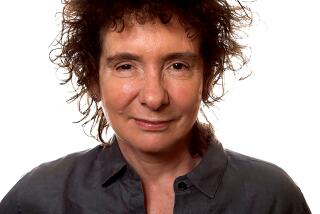Moonlighting Vampire Buster Finds Plenty of Undead Lore to Sink His Teeth Into
- Share via
AMSTERDAM — Hunched before a screen in the depths of a Dutch bank sits a computer expert whose interest moves from bytes by day to Transylvanian nibbles at night.
Rob Brautigam, when not at work in the ABN AMRO bank, is the Netherlands’ only vampire hunter.
His alternative business card reads: “Vampire Control--Center for Vampirological Research.”
Brautigam, 45, has devoted all his spare time of the last 20 years to studying the phenomenon of vampires.
His quarterly magazine, “International Vampire,” examines the subject in depth and has exploded some of the myths about the legendary blood-sucking demons.
The magazine is written in English; most of its readers are in Britain and the United States.
“There is no interest in the Netherlands, but huge interest in the U.S. and U.K. I would say one new vampire club starts up every month,” Brautigam said.
“You would be surprised how many weird people there are around.”
Some people have their teeth filed to resemble a vampire’s fangs; others try to get blood to drink. Mental disorders and blood fetishism lie behind most recent reports of vampirism, Brautigam said.
He cited cases in Australia. A Brisbane woman was sentenced to life in prison last February for stabbing a man, then drinking his blood as he lay dying. The same woman, he said, used to make small cuts in her lesbian lover’s wrist and feed on the blood.
In a recent issue of the magazine, Brautigam said he planned an in-depth investigation into the saga of a traditional-style vampire said to have lived near Karl Marx’s grave in London’s Highgate cemetery.
Quoting a British vampirologist, Sean Manchester, the report said the cloaked figure reputedly roamed at night and bit people as they slept.
It said Manchester and some helpers staked out the cemetery and discovered a man’s body in a tomb, dead but undecayed. They exorcised the tomb but the corpse was stolen. Manchester’s team recovered the body two years later, still unrotted, drove a stake through its heart and cremated it.
“It is interesting because it is so recent. Many witnesses are still around,” Brautigam said.
Brautigam spends vacations going west to meet other vampirologists and east to where it all began --in Romania, Bulgaria and Yugoslavia.
He says that, contrary to popular belief, the center of the vampire tradition is Oltenia, in southern Romania, rather than Transylvania farther north.
“The whole phenomenon began in folklore of (Oltenia). It grew out of the tradition of reburial. Corpses were often dug up years after burial, the bones washed and then reburied,” Brautigam said.
“Some of the bodies had not decayed, even years (after death). Scientists can now explain this, but at the time people thought the corpse was not really dead,” he said.
Several natural conditions can combine to preserve a body--cold or very dry ground, smallness of body, for instance. The chemistry of some diseases and poisons can act as a preservative, he said.
Brautigam said the custom of reburial survives yet in remote villages in parts of Romania and Bulgaria.
The traditions of garlic as vampire bane and the wooden stake as cure evolved in that area, as did the name sometimes given vampires--Nosferatu--also the title of the classic horror film starring the Klaus Kinski as Count Dracula.
The name Dracula , immortalized in Bram Stoker’s 1897 book, came from legends of Vlad Dracule, or Vlad the Impaler, a tyrannical medieval ruler of the region who displayed his enemies impaled on stakes.
Brautigam says he doubts that vampires really exist, but he finds them a fascinating field of study. It is, he says, something he can get his teeth into.
“But I am not morbid, or a blood fetishist.”
More to Read
Sign up for Essential California
The most important California stories and recommendations in your inbox every morning.
You may occasionally receive promotional content from the Los Angeles Times.













